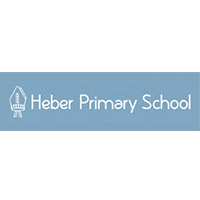Case Study: Heber Primary School
East Dulwich
London
SE22 9LA

Andrew Treen of Heber Primary School, East Dulwich, answers some questions about the impact that Charanga’s Musical School has had on the school’s music provision.
How would you characterise the school and what are its main challenges?
We are an inclusive two-form entry school in an area of London with many private schools and new schools nearby. The number of children spread among these schools has meant the numbers in the classes is decreasing and there has been a consistent trend of children being at our school for a brief time before leaving to join a private school.
Being an inclusive school means we intake children with complex needs that schools nearby to us find a challenge. We are a creative school with an emphasis on high achievement across all curriculum subjects. We strive for independence and resilience in our students and in their learning, encouraging them to achieve well in their results, be it phonics, spelling and grammar, maths, writing or reading.
With specialist teachers for music, art and physical education, the children get at least one session a week of focused, quality education in these areas, boosting their enjoyment and engagement of school and allowing them to achieve their potential in areas other than just maths and English. As per many London schools, decreasing funding is one of our main challenges.
How would you describe music in the school before Musical School was adopted?
Music at our school used to be fractured and sidelined. We have always had a music teacher to teach this unique subject to the level we require, and to allow our children to express themselves and be creative musically, but went through a long period of much change.
We had many different music teachers with different lesson plans. Most stayed less than a year and the children knew a different music teacher every year. This coupled with other factors, led to a deterioration in the department as a whole.
Resources fell into disrepair and were not replaced, our music teaching area was altered to become more like a traditional hall and was used as such, sessions lacked focus and age-related expectation, and opportunities for instrumental tuition was severely limited. We had a lunchtime vocal club set up by the children themselves, but they were few in number and with limited scope.
What impact has Musical School had on the pupils?
Our lessons are now engaging, informative, with open-ended outcomes and with a wide scope to learn many instruments. Due to Musical School we now have our Year 2 pupils reading music and playing the glockenspiel and xylophone, which they performed in a concert in front of the parents and children. They understand key musical words and can use and discuss them with confidence.
The characters in the videos that they love have also become characters in our lessons and performances (such as ‘Basketball Head’ from the pulse video). We’ve used songs from the Scheme in our lessons and have branched out to gifted and talented musicians, such as teaching related drum parts or backing parts on boomwhackers.
We have a variety of listening activities now, including using the Scheme to cover genres (Reggae, Pop, etc), using the genre map to determine which we are listening to, and using the genre map to find new genres we didn’t know previously and exploring them. We have Musical Birthdays each day thanks to the Scheme, which the children love. We even have an after-school ukulele club that uses the resource. The children are requesting Charanga units when they enter new year groups!
What impact has Musical School had on the staff?
Though we still have a turnover of music teachers and teaching assistants, we now cover all our musical objectives more fairly with an even coverage. Our music coordinator can keep track of what’s being covered easily and can assess fairly to compare achievement of the units across year groups. Our staff are more confident to differentiate the lessons using the resources from the Scheme.
We are clearer on the progress the children will take across the year and can easily see the following learning the children will do if needed. Staff can check resources for gifted and talented musicians easily, or dip into the next year sessions as needed. The biggest thing for our staff has been to host Charanga training sessions at Heber, which we have done to train all our music teaching staff. It allows much needed and difficult to find professional development in music, and also allows us to learn more about how to use the resource in different ways and increase our confidence in it.
What are your plans for music going forward?
We are looking to encourage more small band or group performances in our school, probably through assemblies and end of term concerts. The unit Classroom Jazz has improved our improvisation skills, so now we aim to build on this and help the children make their own songs using these skills. We haven’t explored the homework option which we learned about through the Charanga training session we held at our school, so this is something we would like to explore soon.
We would also like to build on the genre learning we have explored thanks to Charanga, perhaps by allowing the children a chance to research genre examples and make presentations to others, demonstrating their learning. The resources offered by Charanga related to SEND are very applicable to us at our inclusive school. I am planning to utilise these in the learning sessions the children have, creating cross-curricular activities for the children. We plan to try a Charanga Christmas play at some stage too.
